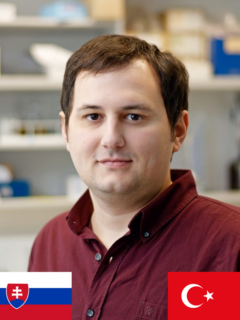Dr.-Ing. Fatih Kurtuldu
Dr.-Ing. Fatih Kurtuldu
Visiting postdoctoral researcher, FunGlass Center, Slovakia
Biofabrication of a co-culture system in nanocomposite bioinks incorporating mesoporous bioactive glass nanoparticles for bone tissue engineering
Supervisor: Prof. Aldo R. Boccaccini
Biofabrication has seen significant progress in recent years with the development of heterogeneous inorganic/organic materials to mimic bone composition. However, the development of cell-laden bioinks for studying the early stages of bone formation remains a challenge. This project focusses on biofabrication of a co-culture system in nanocomposite bioinks following an aproach similar to the one developed at the FAU Institute of Biomaterials [1]. The nanocomposite ink will be developed based on gallium-doped mesoporous bioactive glass nanoparticles [2] with amine functional groups, combined with a hydrogel system composed of alginate di-aldehyde and gelatin. This nanocomposite hydrogel ink will be used to immobilize osteoblast and osteoclast progenitor cells. An extrusion-based 3D printing technique will be utilized to fabricate the constructs. The interaction and crosstalk between osteoblasts and osteoclasts will be studied to understand nanoparticles effects in bone formation. The study is carried out in the framework of the collaboration of our Institute with the Centre for Functional and Surface Functionalized Glass (FunGlass) (LINK: https://www.funglass.eu/ ) in Trencin, Slovakia. This project has received funding from the European Union´s Horizon 2020 research and innovation programme under grant agreement No 739566.
[1] T. Zehnder, A.R. Boccaccini, R. Detsch, Biofabrication of a co-culture system in an osteoid-like hydrogel matrix, Biofabrication. 9 (2017) 025016. https://doi.org/10.1088/1758-5090/aa64ec.
[2] F. Kurtuldu, N. Mutlu, R.P. Friedrich, A.M. Beltrán, L. Liverani, R. Detsch, C. Alexiou, D. Galusek, A.R. Boccaccini, Gallium-containing mesoporous nanoparticles influence in-vitro osteogenic and osteoclastic activity, Biomater. Adv. 162 (2024) 213922. https://doi.org/10.1016/j.bioadv.2024.213922.

